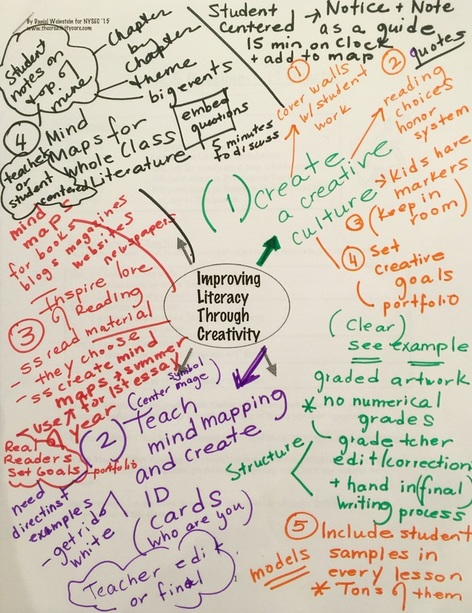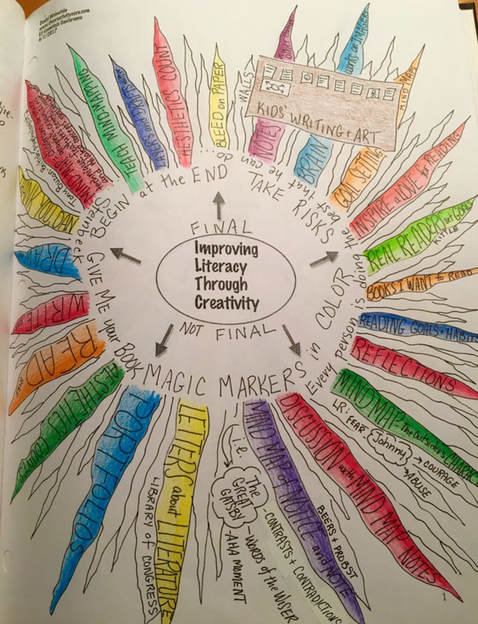Infusing
Technology
& Creativity
- Covering the walls of my classroom in their work.
- Maintaining shelves full of reading choices.
- Mandating pupils bring magic markers and other art supplies daily.
- Setting creative goals for them quarterly, culminating in a portfolio.
- Getting them to fill notebook pages through freewrites, quickwrites, Zentangle and doodle sessions, asking for "10 Notebook pages" twice a quarter, and other ways to make the notebook a consistent element in class and in their lives.
- Including student-samples in every lesson. Tons of them.
- What does this look like in the hybrid classroom: Tons of pictures on Google Classroom posts and assignments; Padlet for sharing sessions; creative assignments in every class; constant reminders of notebooks and portfolios.
- To learn mind mapping, students need direct instruction and plenty of examples. Mini-lesson #3: Mind Mapping.
- The first assignment: ID cards. Students mind map their passions and interests.
- Key points: study models but always innovate; art "skill" doesn't matter; create layers and drafts of your work; experiment with color; aesthetics count.
- Grading creativity in the hybrid classroom ... I try to use formative assessment to get the best work I can out of a student by always coaching them to revise for more points (instead of "summative assessment").
Once I caught the Book Love passion, I re-designed our department's summer reading assignment: Students are asked to keep a chart of what they read. Period. No mandatory reading - except in honors or AP. The question is: What should a teacher do with the chart in September?
- Invite students to create mind maps based on summer reading, which I define as everything they read -- books, newspapers, magazines, websites, blogs, etc. I want to know what they read.
- These mind maps are stand-alone art, but they also become useful on the first essay of the year.
- "Real readers set goals," says Penny Kittle. My kids just turn them into mind maps.
- "Reading Goals" mind maps are often revisited throughout the yearn(especially in quick-writes) and reflected upon in the portfolio.
- Teacher-centric: Create mind maps designed for student-notes atop your starter web. Then re-inforce note-taking strategies as you go through the lesson. Click here to see my student-teacher's entire Frederick Douglass unit!
- Student-centered: Use the signposts from Notice & Note to give the students more flexibility and autonomy.


 RSS Feed
RSS Feed